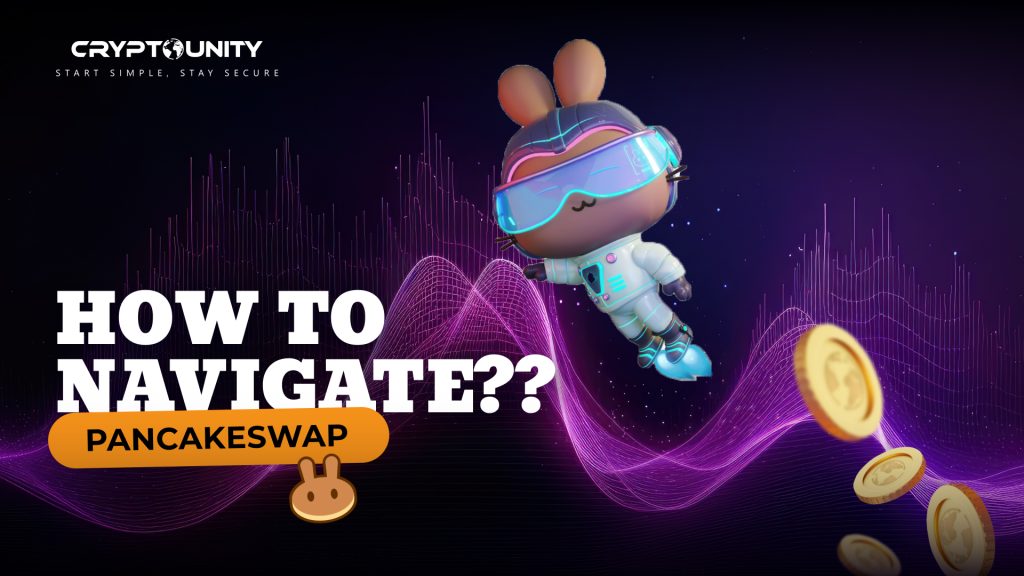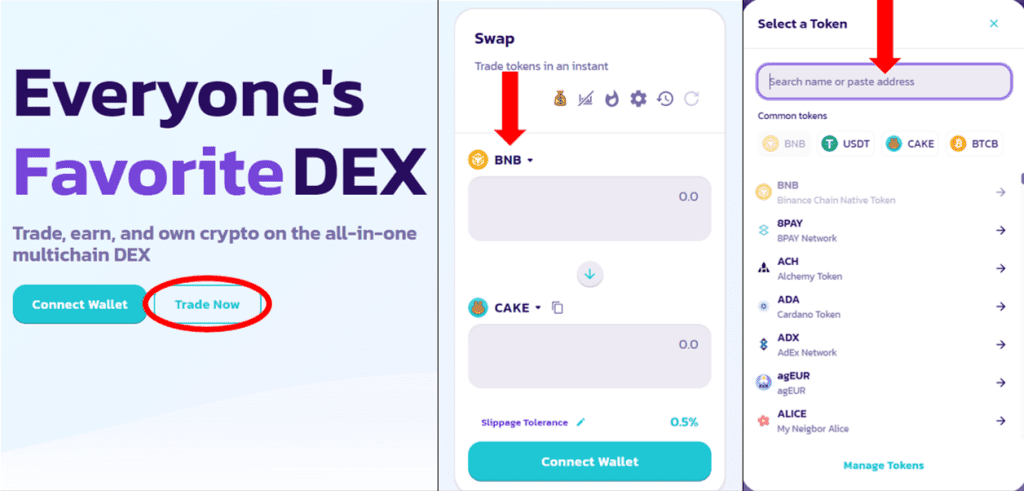GUIDE ON THE PANCAKESWAP EXCHANGE

Introduction to Decentralized Exchanges (and PancakeSwap)
Decentralized exchanges (DEXs) have risen in popularity in the crypto world, with PancakeSwap (PCS) being a notable standout. It operates on the BNB Chain and is regarded as the largest DEX on this blockchain. As of the date of the workshop, it has seen impressive figures such as an All-Time High Liquidity Pool of $8 billion and a daily volume of $6.25 billion. Even in bear markets, it boasts over 150,000 Daily Active Users, which, to give perspective, is significant given that Binance has around 1 million DAUs.
How do they work?
Centralized Exchanges (CEXs) such as Binance or Coinbase generally manage users’ funds and offer trades through a structured internal system, also known as order book. Unlike CEXs, most DEXs don’t use an order book. Instead, they utilize a mechanism called Automated Market Makers (AMM).
Automated Market Makers
In AMM-based DEXs, there aren’t traditional buyers and sellers. Rather, the platform relies on liquidity pools. These pools contain two tokens, and their ratio determines the price of one token in terms of the other. When you want to trade, you interact with these pools directly. If you buy a token, you add to one side of the pool and remove from the other, which adjusts the price according to a set formula. This automatic adjustment based on supply and demand is why they are called “Automated” Market Makers.
When you transact on a DEX, you’re not sending your tokens to the exchange’s wallet. Instead, you’re trading directly from your own wallet, ensuring you maintain control of your assets throughout the process.
Buying and selling $CUT on PancakeSwap
As our esteemed CUT token makes its way onto PancakeSwap, it’s essential for our community members to know how to seamlessly integrate and trade it.
- Opening PancakeSwap exchange: To visit the PCS exchange, Google search it, or visit: https://pancakeswap.finance/ (always pay attention to links to make sure it is not a phishing site)

- Connecting your Wallet: First, you will have to integrate your crypto wallet with PancakeSwap. Compatible wallets include both MetaMask and Trust Wallet. To do this, select the “Connect Wallet” option on PancakeSwap and choose your wallet.

- Adding CUT to PancakeSwap: To add $CUT on the PCS, you will have to click on the “TRADE NOW” button. When the window opens, click on “BNB” and input the CUT token’s contract address in the search bar.

0xB1ff83EF5e44862d634413Be77cA4dC6AC50B74F
Once you add the address, you will have to confirm the address on the exchange and in your wallet.
- Trading CUT: With CUT added, you can now trade it using the CUT/BNB trading pair. Ensure you have enough BNB for fees, as all transactions on the BNB Chain include a fee in BNB.
- Converting BNB to Fiat (EUR): While this process varies depending on the region and platform, in general, to convert BNB to fiat:
- Transfer BNB to a centralized exchange that supports fiat withdrawals – for example, the CryptoUnity exchange (soon).
- Sell BNB for fiat on the exchange.
- Withdraw the fiat to your bank account.
Conclusion
And there you have it! With this guide, we’ve lifted the curtain on the basics of PancakeSwap, paving the way for your understanding and participation. As you continue your journey in the cryptocurrency space, understanding the nuances of platforms like this will undoubtedly enhance your experience and proficiency.
Happy trading!
